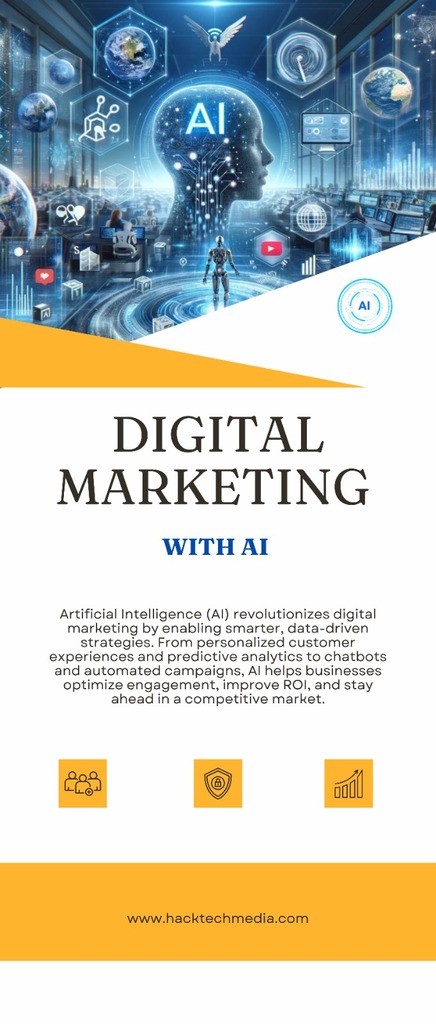
In an era where digital transformation is rapidly reshaping businesses, the threat landscape is evolving just as quickly. Cybercriminals are becoming increasingly sophisticated, employing advanced tactics to exploit vulnerabilities in organizations. To counter these threats effectively, organizations must harness the power of Cyber Threat Intelligence (CTI). This blog explores the importance of CTI, its components, and how it can enhance cybersecurity strategies to protect against cybercrime.
Understanding Cyber Threat Intelligence
Cyber Threat Intelligence is the collection and analysis of information about current and potential threats that can affect an organization’s digital assets. Unlike traditional security measures, which often rely on static defenses, CTI is dynamic and proactive. It involves gathering data from various sources, analyzing it, and disseminating actionable intelligence to help organizations prepare for and respond to cyber threats.
The Components of Cyber Threat Intelligence
CTI consists of several key components:
- Data Collection: Gathering information from multiple sources, including open-source intelligence (OSINT), dark web monitoring, threat feeds, and internal security logs.
- Analysis: Evaluating the collected data to identify patterns, trends, and indicators of compromise (IoCs). This analysis helps in understanding the tactics, techniques, and procedures (TTPs) used by cybercriminals.
- Dissemination: Sharing the analyzed intelligence with relevant stakeholders within the organization, including IT security teams, management, and even employees.
- Action: Implementing the intelligence gathered to enhance security measures, such as updating firewalls, patching vulnerabilities, and improving incident response plans.
Why Cyber Threat Intelligence is Essential
1. Enhanced Threat Detection
CTI improves an organization’s ability to detect threats early. By understanding the latest attack vectors and methods used by cybercriminals, organizations can implement more effective monitoring and detection systems. For instance, threat intelligence can help identify suspicious network traffic patterns that may indicate a potential breach.
2. Proactive Risk Management
Organizations can move from a reactive to a proactive security posture by utilizing CTI. Rather than waiting for a security incident to occur, they can anticipate and mitigate risks. This proactive approach involves regularly updating security protocols based on emerging threats, which significantly reduces the likelihood of successful attacks.
3. Improved Incident Response
In the event of a cyber incident, having access to relevant intelligence can drastically improve an organization’s response time. CTI provides valuable insights that can help security teams understand the nature of the threat, the extent of the damage, and the necessary steps for containment and remediation. This swift response can minimize the impact of a breach.
4. Better Resource Allocation
CTI helps organizations allocate their security resources more effectively. By understanding where the greatest risks lie, organizations can prioritize their efforts and investments in security tools, personnel training, and infrastructure improvements.
5. Staying Ahead of Cybercriminals
The cyber threat landscape is constantly changing, with new threats emerging regularly. CTI enables organizations to stay ahead of these threats by providing timely and relevant information. This continuous awareness allows businesses to adapt their security strategies in response to evolving risks.
Cybersecurity Strategies Incorporating CTI
To effectively leverage Cyber Threat Intelligence, organizations should integrate it into their broader cybersecurity strategies. Here are some essential strategies:
1. Threat Intelligence Platforms (TIPs)
Implementing a Threat Intelligence Platform can centralize and streamline the collection, analysis, and dissemination of threat intelligence. These platforms provide organizations with tools to automate data collection, correlate data from various sources, and deliver real-time threat updates to security teams.
2. Regular Training and Awareness Programs
Educating employees about cyber threats and the importance of CTI is crucial. Regular training sessions can help employees recognize phishing attempts, social engineering tactics, and other common threats. An informed workforce is often the first line of defense against cybercrime.
3. Collaboration with External Partners
Organizations should consider collaborating with external threat intelligence providers, industry groups, and government agencies. This collaboration can enhance the quality and breadth of threat intelligence, allowing organizations to share insights and best practices.
4. Integration with Existing Security Tools
CTI should not exist in isolation. Organizations should integrate threat intelligence with existing security tools, such as Security Information and Event Management (SIEM) systems, intrusion detection systems (IDS), and endpoint protection solutions. This integration enhances the overall effectiveness of the security architecture.
5. Incident Response Planning
An effective incident response plan should incorporate insights gained from threat intelligence. Organizations should regularly update their response strategies based on emerging threats and ensure that all relevant personnel are familiar with the plan.
Real-Time Threat Monitoring

Real-time threat monitoring is a critical component of a comprehensive cybersecurity strategy. By continuously monitoring networks, endpoints, and user behavior, organizations can quickly identify anomalies that may indicate a potential breach. This capability is greatly enhanced by integrating CTI, as organizations can use the latest threat information to inform their monitoring efforts.
Key Elements of Real-Time Threat Monitoring
- Automated Alerts: Implement automated alert systems that notify security teams of suspicious activities or anomalies based on threat intelligence.
- Behavioral Analytics: Utilize behavioral analytics tools to identify unusual patterns of activity that may signal a breach. This can include tracking user behavior, network traffic, and system access patterns.
- Threat Hunting: Proactively searching for threats within the network, using threat intelligence to guide the investigation and identify potential risks.
- Regular Audits and Assessments: Conducting regular security audits and assessments helps organizations stay aware of their security posture and identify potential vulnerabilities before they can be exploited.
Cybercrime Prevention Strategies
Preventing cybercrime requires a multi-faceted approach that incorporates various cybersecurity measures. Here are some strategies to enhance cybercrime prevention:
1. Strong Access Controls
Implement robust access control measures to limit user access to sensitive data and systems. This includes enforcing the principle of least privilege (PoLP), where users are granted only the access necessary for their roles.
2. Regular Software Updates
Keeping software and systems up to date is critical in preventing cyberattacks. Many cybercriminals exploit known vulnerabilities in outdated software. Organizations should establish a regular patch management process to ensure all systems are updated promptly.
3. Encryption
Encrypting sensitive data, both in transit and at rest, adds an additional layer of protection against unauthorized access. Even if cybercriminals manage to breach a system, encrypted data remains unreadable without the appropriate keys.
4. Multi-Factor Authentication (MFA)
Implementing multi-factor authentication adds an extra layer of security by requiring users to verify their identity through multiple means. This can significantly reduce the risk of unauthorized access.
5. Continuous Monitoring and Improvement
Cybersecurity is not a one-time effort but an ongoing process. Organizations should continuously monitor their security posture, evaluate the effectiveness of their measures, and make improvements based on emerging threats and best practices.
Cybersecurity Trends to Watch
The landscape of cybersecurity is constantly changing, influenced by new technologies, evolving threats, and regulatory requirements. Staying informed about the latest trends is essential for organizations looking to enhance their security strategies. Here are some key trends to watch:
1. AI and Machine Learning in Cybersecurity
Artificial intelligence (AI) and machine learning are becoming increasingly important in cybersecurity. These technologies can analyze vast amounts of data, identify patterns, and detect anomalies more quickly than traditional methods. As cyber threats grow more complex, leveraging AI for threat detection and response will be crucial.
2. Zero Trust Security Model
The Zero Trust model operates on the principle that no one, whether inside or outside the organization, should be trusted by default. This approach requires continuous verification of user identities and device security before granting access to resources. Implementing a Zero Trust architecture can significantly enhance security.
3. Increased Regulation and Compliance Requirements
As cyber threats continue to rise, regulatory bodies are imposing stricter requirements on organizations to protect sensitive data. Staying compliant with regulations such as GDPR, HIPAA, and CCPA will be essential for organizations operating in regulated industries.
4. Ransomware as a Service (RaaS)
The rise of Ransomware as a Service has made it easier for cybercriminals to launch attacks. Organizations must be aware of this trend and implement comprehensive backup and recovery solutions to mitigate the impact of potential ransomware attacks.
5. Focus on Data Privacy
With growing concerns over data privacy, organizations must prioritize data protection measures. This includes implementing robust data governance policies, conducting regular audits, and ensuring that sensitive data is adequately protected against breaches.
Conclusion
As cybercriminals continue to evolve their tactics, organizations must adopt a proactive approach to cybersecurity through Cyber Threat Intelligence. By leveraging CTI, businesses can enhance their threat detection capabilities, improve incident response, and stay ahead of emerging threats. Implementing comprehensive cybersecurity strategies, incorporating real-time monitoring, and focusing on prevention are essential steps in safeguarding digital assets.
In this fast-paced digital landscape, staying informed about cybersecurity trends and continuously improving security measures will be critical to protecting organizations from the ever-growing threat of cybercrime. Embracing a culture of security awareness and collaboration will empower organizations to navigate the complexities of the cyber threat landscape with confidence.




